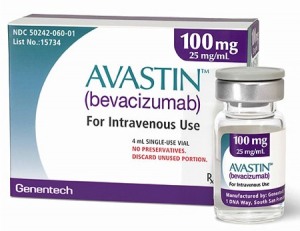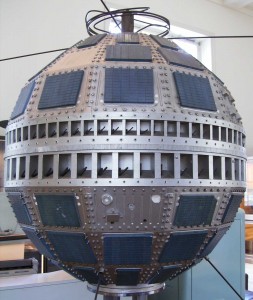Thanks Nan!
Via: Rhymes With Orange

Books I’ve read… a work in progress:
This song, “Army of Me”, is part of the soundtrack of the movie Sucker Punch. A young girl is institutionalized by her abusive stepfather. Retreating to an alternative reality as a coping strategy, she envisions a plan which will help her escape from the mental facility.
The song was written and performed by Bjork and features Skunk Anansie. Army of Me caught my ear immediately. It’s driving industrial sound along with a techno beat fits the movie perfectly.
Army of Me Lyrics
Stand up
You’ve got to manage
I won’t sympathize
Anymore.
And if you complain once more
You’ll meet an army of me
And if you complain once more
You’ll meet an army of me
You’re alright
There’s nothing wrong
Self-sufficience please!
And get to work.
And if you complain once more
You’ll meet an army of me
And if you complain once more
You’ll meet an army of me
Army of me
You’re on your own now
We won’t save you
Your rescue-squad
Is to exhausted
And if you complain once more
You’ll meet an army of me
And if you complain once more
You’ll meet an army of me
And if you complain once more
You’ll meet an army of me
And if you complain once more
You’ll meet an army of me
Army of me
. By Jane Mundy
 According to Russell, who stopped taking Avastin after his oncologist determined the cancer drug caused kidney damage, the risks outweigh the benefits.
According to Russell, who stopped taking Avastin after his oncologist determined the cancer drug caused kidney damage, the risks outweigh the benefits.
Russell underwent a second craniotomy one year ago (he was diagnosed with brain cancer in 2008) and he took Avastin for 11 months—long enough to cause kidney damage. “I won’t know the extent of the kidney damage until I have another MRI, but I am concerned,” says Russell. “Avastin is a stand-alone, tumor starvation therapy. It is a double-edged sword.
“I stopped taking Avastin last December because there was protein in my urine, which means that I’m not getting enough protein from the foods I eat and also a sign of kidney damage,” Russell explains. “My doctor took me off Avastin, hoping the damage would reverse itself, but so far it hasn’t, so it would appear that I do have permanent kidney damage. When I pee, my urine forms all kinds of bubbles—I call it my ‘afro-comment.’ It’s like a reminder that these problems can wear on you if you let them…”
But Russell, who will be 50 in March, is doing his best not to let Avastin side effects wear him down, and he has clearly kept his sense of humor. “I’m a very positive person and feel fortunate that I am still here,” he says. “I didn’t have any problems before taking Avastin; I was in perfect shape—I used to run marathons.
“Now my doctor is sending me to a kidney specialist, who is having my blood and urine checked weekly, and has scheduled me for another ultrasound. After my oncologist told me about Avastin and the link to kidney damage I did some research online; it didn’t surprise me that there are now so many Avastin lawsuits.”
A study published in the Journal of the American Society of Nephrology (June 2010) has shown that Avastin is linked to kidney damage. According to the researchers, “a little more than 2 percent of people taking Avastin developed severe proteinuria. Their risk for the condition was found to be almost five times higher than for patients receiving only chemotherapy.” Although the researchers found that patients with kidney cancer were at the highest risk of developing this condition, those who took higher doses of Avastin were at higher risk as well.
Even with the findings from this study, however, doctors stress that it doesn’t mean patients and their providers should stop using it. “The benefits of Avastin are tremendously important for patients who have the types of malignancies that may be responsive to this medication,” said Dr. Bryan Becker, president of the National Kidney Foundation, and some doctors said the incidence of proteinuria with the treatment is not a cause for alarm.
However, a number of researchers and other medical experts said that the results of the study indicate the importance of keeping a close eye on kidney function. “Patients should have baseline determination of kidney status and proteinuria and microalbuminuria [the presence of small amounts of protein in the urine] before starting therapy,” said Dr. Frederick Kaskel, professor and vice chairman of pediatrics at Children’s Hospital at Montefiore Medical Center in New York. And patients need to talk to their physician about having their urine checked before every Avastin treatment. Further, proteinuria places a person at higher risk for blood clots and other complications on top of the risks related to cancer and chemotherapy.
Russell has weighed the odds; he believes that Avastin risks outweigh the benefits and has decided to stop taking the anti-cancer drug. And he is discussing legal options with an Avastin attorney.
 Fifty years ago today, July 12, 1962, the first live television signal was transmitted across the Atlantic Ocean via the diminutive Telstar 1 satellite. Launched from Cape Canaveral just two days prior, Telstar 1 heralded a new age in global communication. Measuring a mere 34.5 inches and weighing in at 170 pounds, it’s size was limited by what would fit into one of NASA’s Delta rockets.
Fifty years ago today, July 12, 1962, the first live television signal was transmitted across the Atlantic Ocean via the diminutive Telstar 1 satellite. Launched from Cape Canaveral just two days prior, Telstar 1 heralded a new age in global communication. Measuring a mere 34.5 inches and weighing in at 170 pounds, it’s size was limited by what would fit into one of NASA’s Delta rockets.
The viewers able to watch the images were treated to twenty minutes of the Statue of Liberty and Eiffel Tower photos, words from John F. Kennedy, and shots of a Phillies versus Cubs baseball game. Telstar circled the globe in 2.5 hour non-geosynchronous orbits, affording twenty minute windows for broadcasting between Andover, Maine, Goonhilly Downs in southwest England, and Pleumeur-Bodou in northwestern France as it passed over the Atlantic.
Telstar 1 relayed many broadcasts, telephone calls, and photos over it’s short four month life. Prior to the launch, the Cold War efforts of both the US and USSR performed high-altitude nuclear tests which left residual radiation in the orbiting Telstar 1 wake. That, combined with cosmic radiation from the sun, destroyed the delicate transistor circuitry in the history making satellite.
But Telstar 1 had made it’s mark. Several more Telstars were launched in the following months which led to the instant global communications we enjoy today.
Happy 50th Anniversary Telstar 1!
The mega-storm that hit several eastern states June 29, 2012 left over five million homes without power, caused widespread damage, and took at least 22 lives. The storm was actually a series of storms that joined forces and very quickly became a devastating line of destructive power. The term “derecho” is being used to describe this weather phenomenon.
According to the National Oceanic and Atmospheric Administration’s Derecho Facts Page:
“A derecho (pronounced similar to “deh-REY-cho” in English … ) is a widespread, long-lived wind storm that is associated with a band of rapidly moving showers or thunderstorms. Although a derecho can produce destruction similar to that of tornadoes, the damage typically is directed in one direction along a relatively straight swath. As a result, the term ‘straight-line wind damage’ sometimes is used to describe derecho damage. By definition, if the wind damage swath extends more than 240 miles … and includes wind gusts of at least 58 mph … or greater along most of its length, then the event may be classified as a derecho. “
In other words, it’s like 30 tornadoes that, rather than spinning, move in a straight line causing hurricane force winds. The folks affected by the June 29 Derecho will attest to the strength and power of the storm.
Here’s an audio clip from NPR’s “All Things Considered” show on July 2, 2012:
DerechoNPR
And a YouTube video of the path the derecho took:
Via NPR: Word of the Day – Derecho
